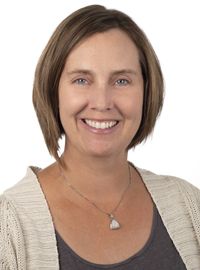
Family Medicine Residency
Mission Statement
Our mission is to develop family physician leaders who will innovate change in local communities and who will help create solutions to national challenges, improving the health of the populations they serve.
Equal Opportunity
Individuals and communities thrive when connected with others who understand, support, and advocate for them. We welcome and support students, residents, staff, faculty, and patients from all backgrounds, and we aim to foster an environment of belonging and respect for everyone.
Training Highlights
- Our program maintains continued accreditation according to ACGME policy and procedures.
- Service to unique clinic populations—former refugees, patients seeking gender affirming care, unhoused people, and care for patients needing HIV PrEP, chronic hepatitis C management, and medication assisted treatment (MAT) for opioid use disorder.
- Partnership with the Federally Qualified Health Centers (FQHC) clinic system, where our residents can choose a longitudinal clinical experience, with the opportunity to speak primarily Spanish.
- Opportunity to pursue international language development elective during intern year; Spanish language development elective available throughout residency.
- A strong focus on obstetric training, with receipt of a recent 5-year HRSA (Health Resources and Services Administration) grant to help develop additional elective rotations in high-risk OB, and to augment training in women’s healthcare.
- Robust sports medicine and musculoskeletal training, including rotations with sports-medicine trained family physicians, in-office ultrasound exposure, and rotations at the acute injury clinics at local ski resorts.
- Ultrasound instruction during intern year, focusing on musculoskeletal and obstetric exam skills.
- At least one month spent in a rural community (housing provided), which includes the option to work with physicians on an Indian Health Services (IHS) site. Longitudinal rural experiences are an option.
- Received federal educational grant funding focused on enhancing residents’ training in providing mental health and trauma-informed care to children and vulnerable populations.
- Structured opportunities for research publications and journal article reviews.
- Additional training in adolescent health, advocacy, addiction medicine, and integrative health.
- Opportunities to teach sexual education classes to children from former refugee communities.
Populations in Salt Lake City
With a population of over 1,000,000 people in the greater Salt Lake area, the region is rapidly evolving:
- One in five people speak a language at home other than English.
- Approximately 20% identify as Hispanic or Latino.
- Over 10% identify as either Asian, Black, Native Hawaiian, Pacific Islander, American Indian or Alaskan Native, or multi-racial.
- As a major refugee resettlement city, tens of thousands of former refugees have re-located to the Salt Lake area in recent years, including groups from Somalia, the Democratic Republic of Congo, Syria, Iraq, Vietnam, the former Soviet Union and Burma (Myanmar).
- Approximately 5% of Salt Lake City adults identify as LGBTQ+, one of the highest rates in the country.
- The area is religiously varied with well-established Church of Jesus Christ of Latter-Day Saints, Catholic, Protestant, Jewish, Buddhist, Muslim, Hindu, Native American, Unitarian, and Interfaith communities.
